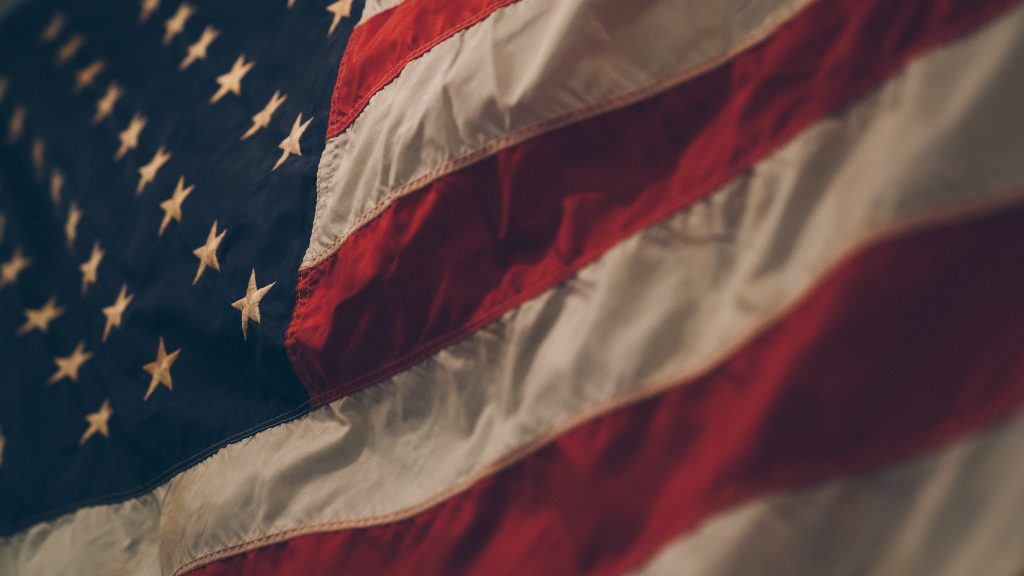
On Oct. 5, American Public Square hosted an author Q&A at William Jewell College for Robert Putnam and Shaylyn Romney Garrett’s “The Upswing: How America came together a century ago and how we can do it again.” Putnam is the Peter and Isabel Malkin Professor of Public Policy at Harvard University and author of critically acclaimed books such as “Bowling Alone,” “Our Kids” and “American Grace.” He has been called one of the most influential academics of our world today. Garrett, a former student of Putnam’s at Harvard, is a founding contributor to David Brooks’ Aspen Institute initiative, Weave: The Social Fabric Project. Garrett has also written extensive opinion articles for the New York Times, Time Magazine, NPR, BBC and PBS Newshour.
Their new book “The Upswing” tells the fascinating story of America’s progression and regression to and away from a “we” society. They argue that we have been on a downslide of division and individualism. The book takes a comparative approach to another divided part of America’s history: the Gilded Age. The authors lay the groundwork for how we can build ourselves back up towards a more equal and better society through a detailed study of past trends.
I was able to sit down with co-author Shaylyn Romney Garrett after the event to talk with her about the book in more detail.
What was the inspiration behind the book?
“One inspiration is that despite writing “Bowling Alone” and calling for the renewal of American communities, our communities have dissolved even further in the 20 years since the book was published. I think Bob’s (Robert Putnam) question was, is there something bigger going on here. So he decided to zoom out and look at the data sets that were about different aspects of society… He stumbled across data sets that matched in measures across society, politics, economics, and culture over 125 years. Which is kind of crazy that they match the same trend. Once he made that discovery, he knew there was an important story to tell, and he brought me in to help with the book.” Said Garrett about the inspiration behind the book.
In the research you mentioned, was there a specific variable that began to trend before the others: a leading variable towards equality?
“It is a little bit hard to identify the leading variable. We do know that the lagging variable was economic quality. Economics was the last curve to turn, which was surprising, especially for those within the social sciences… It is like looking at a flock of birds in flight. All of them turn in one direction at the same time, but from the ground, it is difficult to identify the first bird to turn first. However, if you look at the historical data and the intellectual history of the day, it seems clear that the earliest changes were in a culture that was moving away from individualism and towards communitarianism. It appears that the leading variable was culture.”
A theme in your book is the impact of Progressivism in combating individualism in the early 1900s; what parts of the original movement should we use today in our approach to building a better society?
“It is really important to remember that the original Progressivism era was a bipartisan movement. One historian described the era as so diverse that it was barely coherent… Progressivism is about something more foundational than politics. It is unfortunate that this term has been shuttled into today’s lexicon to describe the far left. The Progressivism movement is a cultural movement, a civic innovation movement, and a citizen-driven movement. So I think that we need to understand that not all solutions are political solutions… The approach was very bottom up. I think that we have become hyper-focused on national politics and not focused enough on the politics and means of our towns and cities… It was the solutions found on the hyper-local level that ultimately bubbled up.”
Overall, the takeaway from the book is clear, more civic participation according to Garrett.
“I think Bob would agree with me in saying that the most important message, from our point of view, is the power of citizen agency. I don’t want people to look at these curves and think this is a wave of history. That is not the case. We still believe that in a democratic society, the citizens determine the course of that society. If we abandon that project and get complacent, things will continue to plunge downwards. It is going to take a lot to turn this ship around, so every single one of us needs to find a way right outside our doorsteps to do that today. Whether that is talking to a neighbor and repairing a relationship damaged by polarization, volunteering in a school to help low-income kids who do not have opportunities, or being welcoming to a refugee or an immigrant. We need to start there. Those will ultimately be the types of changes that create a C change for the country.”
“The Upswing,” is available at a bookstore near you and also on Amazon and other online distributors. “The Upswing” tells the story of how we have overcome our divisions before, and more importantly it helps explain how we can do it again; “The Upswing,” is a must-read for every American.
